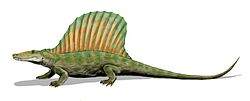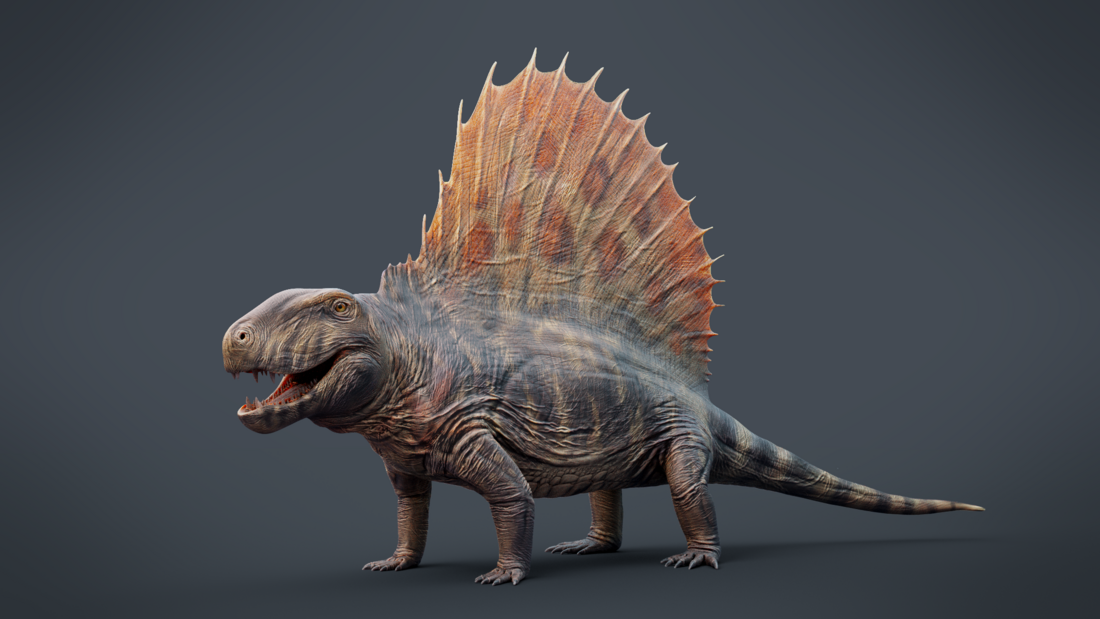Top Qs
Timeline
Chat
Perspective
Sphenacodontia
Clade of synapsids From Wikipedia, the free encyclopedia
Remove ads
Sphenacodontia is a stem-based clade of derived synapsids. It was defined by Amson and Laurin (2011) as "the largest clade that includes Haptodus baylei, Haptodus garnettensis and Sphenacodon ferox, but not Edaphosaurus pogonias".[4] They first appear during the Late Pennsylvanian (Upper Carboniferous) epoch. From the end of the Carboniferous to the end of the Permian, most of them remained large, with only some secondarily becoming small in size.
Basal Sphenacodontia constitute a transitional evolutionary series from early pelycosaurs to ancestral therapsids (which in turn were the ancestors of more advanced forms and finally the mammals). One might say that the sphenacodontians are proto-therapsids (even though there is almost a 30-million-years gap between the separation of the ancestors of therapsids from other sphenacodontians and the first appearance of therapsids in the fossil record).
Remove ads
Characteristics
The defining characteristics include a thickening of the maxilla visible on its internal surface, above the large front (caniniform) teeth; and the premaxillary teeth being set in deep sockets. All other (sister group and more primitive) synapsid clades have teeth that are set in shallow sockets.
Classification


The following taxonomy follows Fröbisch et al. (2011), Benson (2012) and Spinder (2016) unless otherwise noted.[3][4][5]
Class Synapsida
- Eupelycosauria
- Sphenacodontia
Phylogeny
Sphenacodontia in a cladogram after Fröbisch et al., 2011:[5]
Remove ads
See also
References
External links
Wikiwand - on
Seamless Wikipedia browsing. On steroids.
Remove ads


